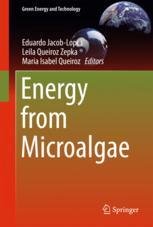

Most ebook files are in PDF format, so you can easily read them using various software such as Foxit Reader or directly on the Google Chrome browser.
Some ebook files are released by publishers in other formats such as .awz, .mobi, .epub, .fb2, etc. You may need to install specific software to read these formats on mobile/PC, such as Calibre.
Please read the tutorial at this link. https://ebooknice.com/page/post?id=faq
We offer FREE conversion to the popular formats you request; however, this may take some time. Therefore, right after payment, please email us, and we will try to provide the service as quickly as possible.
For some exceptional file formats or broken links (if any), please refrain from opening any disputes. Instead, email us first, and we will try to assist within a maximum of 6 hours.
EbookNice Team

Status:
Available0.0
0 reviewsThis book presents an authoritative and comprehensive overview of the production and use of microalgal biomass and bioproducts for energy generation. It also offers extensive information on engineering approaches to energy production, such as process integration and process intensification in harnessing energy from microalgae.
Issues related to the environment, food, chemicals and energy supply pose serious threats to nations’ success and stability. The challenge to provide for a rapidly growing global population has made it imperative to find new technological routes to increase the production of consumables while also bearing in mind the biosphere’s ability to regenerate resources. Microbial biomass is a bioresource that provides effective solutions to these challenges.
Divided into eight parts, the book explores microalgal production systems, life cycle assessment and the bio-economy of biofuels from microalgae, process integration and process intensification applied to microalgal biofuels production. In addition, it discusses the main fuel products obtained from microalgae, summarizing a range of useful energy products derived from algae-based systems, and outlines future developments. Given the book’s breadth of coverage and extensive bibliography, it offers an essential resource for researchers and industry professionals working in renewable energy.